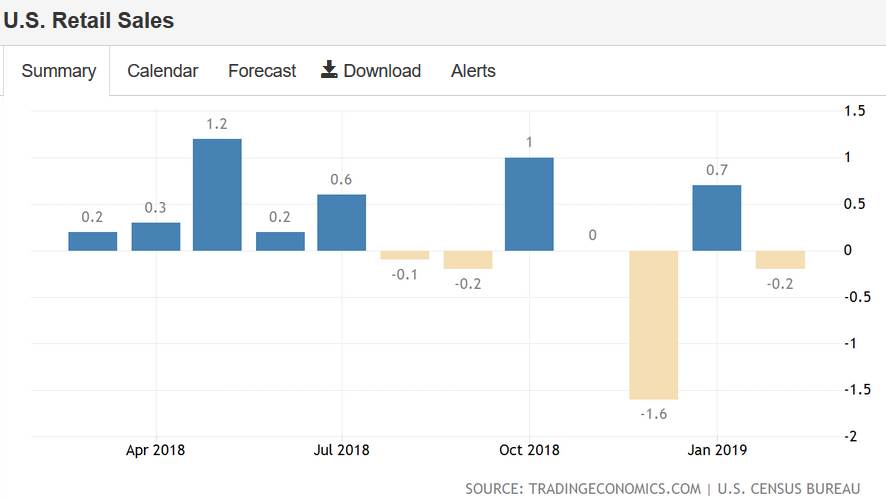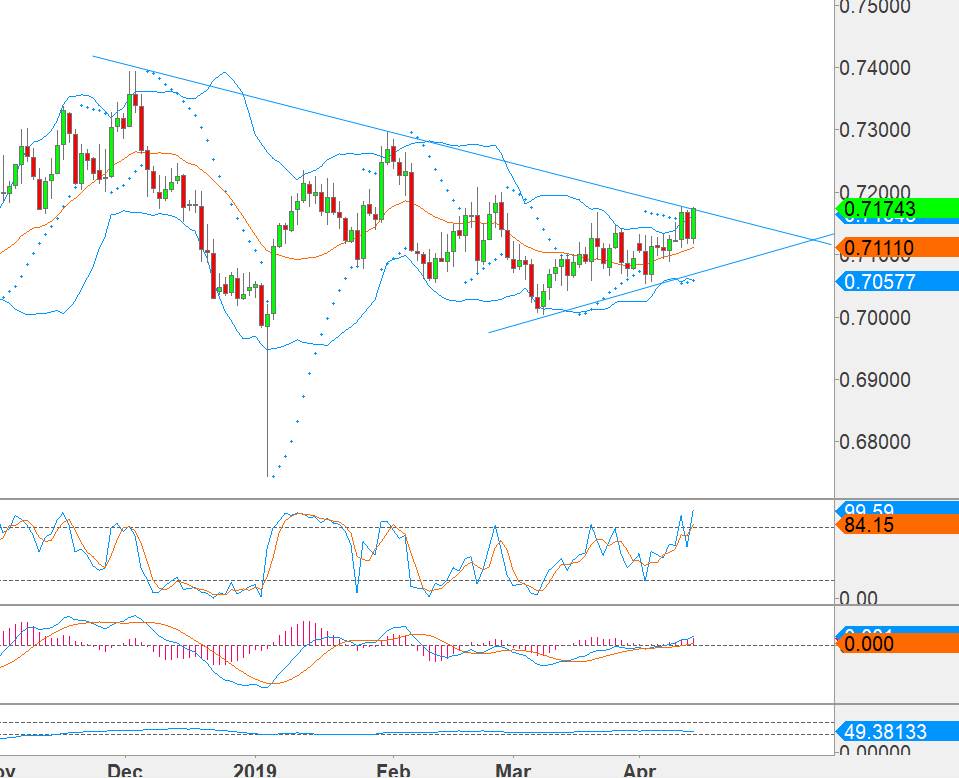Outlook:
Today's data menu is more important than these indicators usually portend. We get import/export prices and the University of Michigan consumer confidence.
Import/export prices are potentially a trigger for a Trump outburst about the too-strong dollar. In his reptile brain, he knows that if the Fed were more dovish, the dollar would fall. Given the rising dollar, export prices must have risen in the latest accounting. Trump may use it to further his policy of grudges, valid or not.
The consumer confidence indices are important because the market commentariat thinks the consumer is the last to recognize the global slowdown, silly sods. But the consumer is two-thirds the US economy and once the consumer pulls in his horns, we are really in the soup. This seems like a logical idea but over the years we see the consumer wildly off the mark. Sentiment lags horribly and sometimes never does match the economic data until the ceiling has fallen down. Consumer confidence is certainly not a leading indicator. Beware drawing any deductions about spending plans or inflation expectations. In March, the index was revised higher to 98.4 from the preliminary 97.8 when the "current conditions" index component was stronger than thought at first. Wait a minute—March was the month when the jabber about a synchronized global slowdown was getting a grip. It by-passed the "ignorant" consumer entirely.
We say the ignorant consumer is just being mismeasured. For one thing, the Michigan survey covers only a few hundred persons. There is no way is it representative. In fact, it's really bad statistics. Secondly, it's a telephone survey. Remember how the pollster struggled with phone surveys ahead of the 2016 presidential election. Nate Silver, among others, wrote tomes about it. The only people with land lines these days are the oldsters. They may be inclined to say the economy is good and deserves confidence because the stock market is up. Finally, we want to know what people do, not what they say. When the consumer is exhibiting sentiment, it takes the form of retail sales. And retail sales have been faltering since last October.
Other economies are beset by countervailing forces, too. Old idea—the Australian dollar leads. If the AUD breaks out to the upside, the euro is not far behind. This rule really does work a little more than half the time, but that leaves plenty of occasions when it fails. Uncertainty over the Australian economy is on the seesaw. There's China and raw materials, but also the labor market and housing. The RBA claims to be neutral but locals smell a cut.
Another old rule—when you can't figure out what the economics are proposing for the currency, draw a chart. Here the AUD has old-fashioned support and resistance lines indicating the latest swing up should be ending. A breakout to the upside is always possible, of course, but funny enough, old-fashioned support and resistance, which go in and out of favor, happen to be in favor at the moment. If a preponderance of traders see the chart this way, the AUD's goose is cooked.
We see a similar problem with sterling. Some factors are deeply discouraging, like new business investment, but others indicate the economy can muddle through (inflation, trade improvement). Brexit should be a heavy stone around sterling's neck, but the pound is far more resilient than we think. We saw a reference to the pound holding over the 200-day so had to check it out. Sure enough, the pound has been above the 200-day for over a month. The 200-day has zero value as an "indicator." It means nothing more than "long-term." You can't trade on it. But the lure of the 200-day persists because so many people talk about it.
On the chart here, the 200-day is the green line. We also drew a linear regression channel from the end of the downmove (1.2662 on 08/15/18) to the last high (1.3381 from 03/13/19). It's practically horizontal. It's also useless because it's too wide and encompasses more than one visibly obvious trend. Quick, what do these channels tell us about the path of sterling going forward? Nothing, and just as useless as the 200-day. A breakout below the 200-day will be shouted about, but has no predictive value.
The point, probably, is that uncertainty is so high that traders are paralyzed. This ends up resulting in a drop in volatility when many look to volatility numbers to figure out how to trade. This morning the pound was almost unchanged from yesterday when we typed it into the spreadsheet. The announcement of the postponement to Halloween was already known, to be sure, but no reaction in prices indicates rising tension that must explode at some point. Some call it lethargy or doldrums, but those words have the wrong connotation. "Coiling spring" is a better one (we got that splendid metaphor from poundsterlinglive.com, by the way). A May resignation might not suffice to unleash the spring.
With the only currencies showing any movement the yen and Swiss franc, it's hard to say how next week will shape up. Unless Trump makes a new stink about trade with Japan and Europe, we don't see any market movers. That means a slow-moving and sideways moving market in the euro benchmark. Hunker down.
Note to Readers: Get ready. Passover and Good Friday are on the same date this year, April 19. Markets will close early if they are open at all. Next Monday, April 15, we will publish the morning report but no afternoon reports (oral surgery, eek). We will not publish any reports on Thursday or Friday. Publication resumes the following Monday, April 22.
This is an excerpt from “The Rockefeller Morning Briefing,” which is far larger (about 10 pages). The Briefing has been published every day for over 25 years and represents experienced analysis and insight. The report offers deep background and is not intended to guide FX trading. Rockefeller produces other reports (in spot and futures) for trading purposes.
To get a free trial, please write to [email protected] and you will be added to the mailing list..
This morning FX briefing is an information service, not a trading system. All trade recommendations are included in the afternoon report.
Recommended Content
Editors’ Picks
EUR/USD edges lower toward 1.0700 post-US PCE

EUR/USD stays under modest bearish pressure but manages to hold above 1.0700 in the American session on Friday. The US Dollar (USD) gathers strength against its rivals after the stronger-than-forecast PCE inflation data, not allowing the pair to gain traction.
GBP/USD retreats to 1.2500 on renewed USD strength

GBP/USD lost its traction and turned negative on the day near 1.2500. Following the stronger-than-expected PCE inflation readings from the US, the USD stays resilient and makes it difficult for the pair to gather recovery momentum.
Gold struggles to hold above $2,350 following US inflation

Gold turned south and declined toward $2,340, erasing a large portion of its daily gains, as the USD benefited from PCE inflation data. The benchmark 10-year US yield, however, stays in negative territory and helps XAU/USD limit its losses.
Bitcoin Weekly Forecast: BTC’s next breakout could propel it to $80,000 Premium

Bitcoin’s recent price consolidation could be nearing its end as technical indicators and on-chain metrics suggest a potential upward breakout. However, this move would not be straightforward and could punish impatient investors.
Week ahead – Hawkish risk as Fed and NFP on tap, Eurozone data eyed too

Fed meets on Wednesday as US inflation stays elevated. Will Friday’s jobs report bring relief or more angst for the markets? Eurozone flash GDP and CPI numbers in focus for the Euro.


